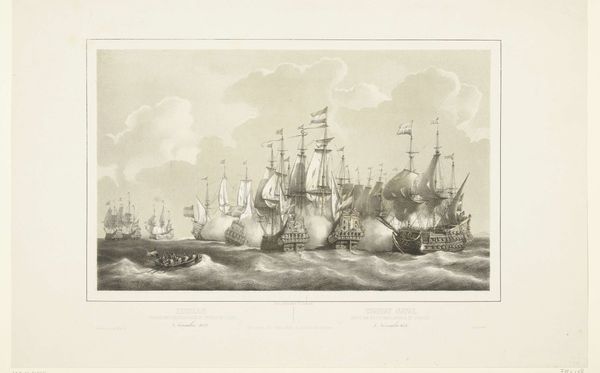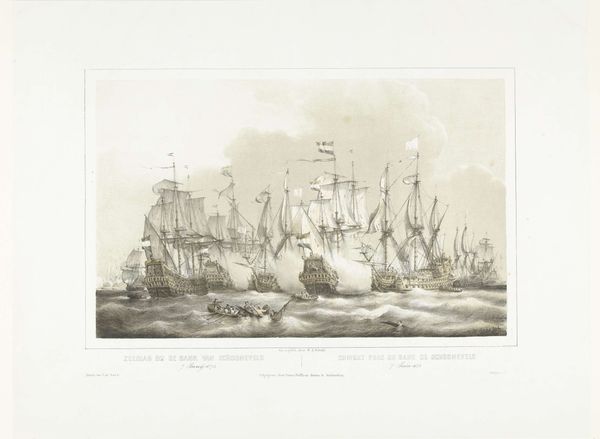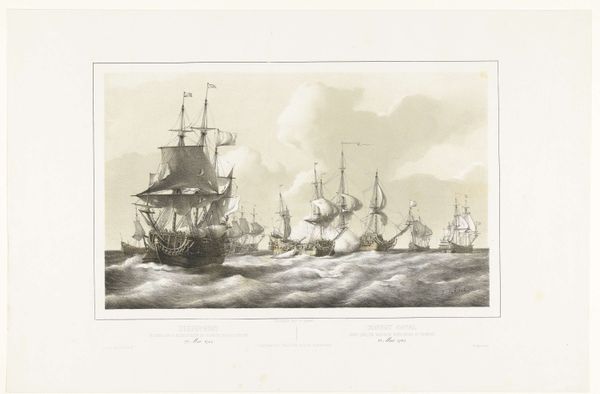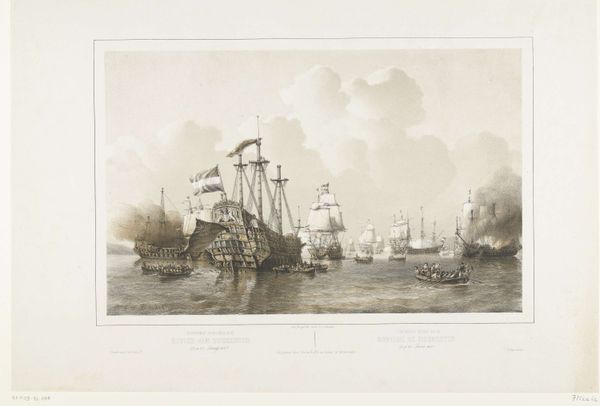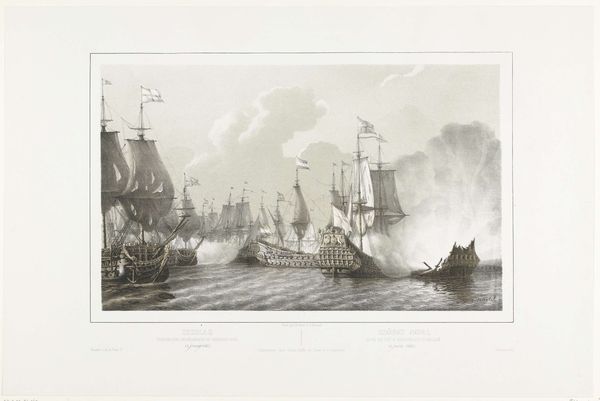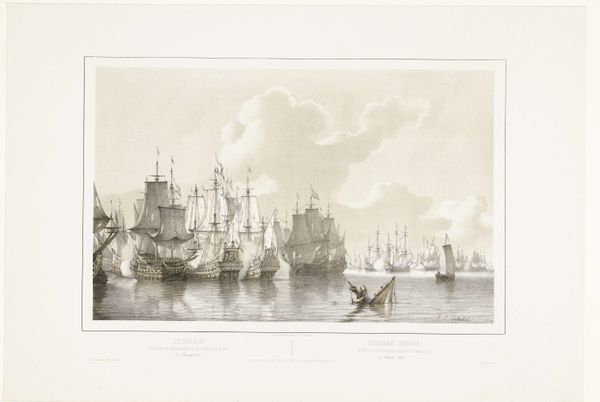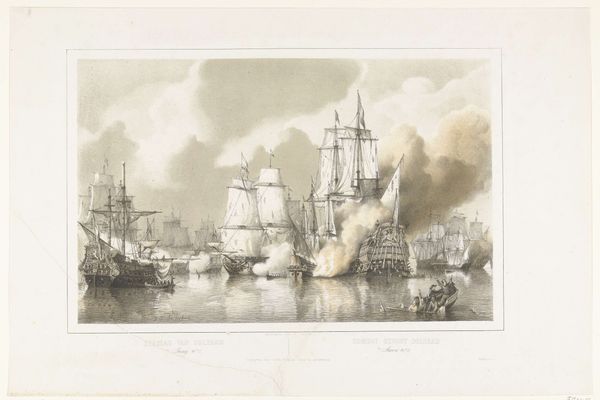
Dimensions: height 363 mm, width 546 mm
Copyright: Rijks Museum: Open Domain
Editor: Here we have Petrus Johannes Schotel's "The Four Days' Battle, 1666," an etching and engraving dating from the mid-19th century. There's so much intense energy, captured in these incredible swirling lines... It really evokes the chaos of naval warfare. What strikes you about this piece? Curator: It’s fascinating how Schotel, in the 19th century, returns to this 17th-century naval battle. Think about the rise of national identities during Schotel’s time. Representing historical battles served a powerful purpose: it helped construct and reinforce a sense of national pride and a shared past, especially in the young Kingdom of the Netherlands. The *representation* of history is always a political act. What is being omitted, I wonder? Editor: That's an angle I hadn't considered. So, it's not just about depicting a historical event but also about crafting a specific narrative around Dutch identity. The focus seems entirely on the naval prowess, almost romanticizing war itself. Curator: Exactly. And look at the stylistic choices. The composition is almost theatrical, designed for maximum visual impact. Schotel utilizes Romanticism – dramatic lighting, turbulent waves, the sheer scale of the battle – to evoke powerful emotions. Ask yourself, for whom was this print intended? It likely circulated amongst a burgeoning middle class, eager for symbols of national strength. Editor: That makes a lot of sense. I was initially drawn in by the artistic skill, but now I see how the image functioned within a broader socio-political context, promoting a particular view of Dutch history. Curator: Precisely. The Rijksmuseum hanging it today continues that process of selection and interpretation. How does the museum's display context change or reinforce Schotel’s message, do you think? Editor: This has definitely opened my eyes to how history and art intertwine to shape collective memory. It’s not just a picture of a battle; it's an argument about Dutch identity. Thanks!
Comments
No comments
Be the first to comment and join the conversation on the ultimate creative platform.
